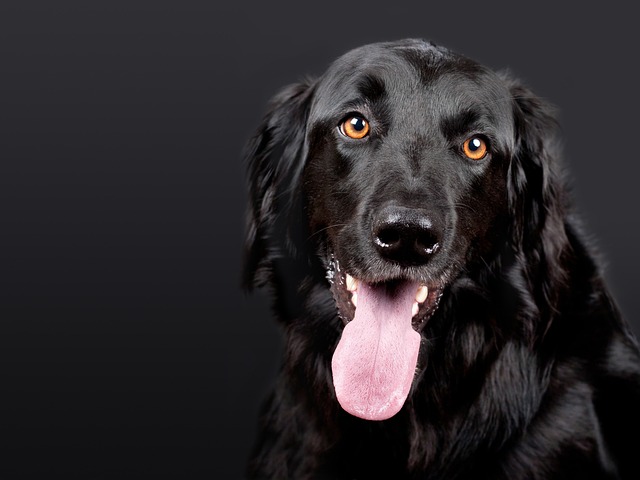
What are the complications of Cushing's disease in dogs?
Cushing's disease in dogs often flies under the radar until subtle symptoms snowball into bigger issues, and many owners don’t realize how it can ripple through their pet’s health.
I stood with my friend Jake in a Denver pet store last weekend, where he held two bags of dog food—one labeled “grain-free” for $80, the other with whole wheat for half the price—staring at his 2-year-old Corgi, Piper, who’d been scratching her ears lately. “Everyone online says grain-free is healthier, but is it worth it? Should my dog eat grain-free or not?” Jake asked, flipping between the ingredient lists. If you’re a new U.S. dog owner tangled in this common debate, the answer isn’t “yes” or “no”—it depends on your pup’s unique needs, not trends.
To understand why grain-free isn’t one-size-fits-all, let’s break down dog biology and diet. Dogs are omnivores, meaning their bodies can digest grains like brown rice, oats, or barley—these grains provide cheap, reliable energy, fiber (for healthy poops), and even nutrients like B vitamins. Jake’s vet later explained that most dogs don’t have “grain allergies”—only 10% of canine food allergies are to grains; the rest are to proteins like chicken or beef. The grain-free trend took off because humans started avoiding grains, but dogs have different digestive systems. Worse, the FDA warned a few years back that some grain-free foods (using peas, lentils, or potatoes as substitutes) might link to heart issues in large breeds—another reason to skip the trend unless medically necessary.
Here’s how to decide if your dog should eat grain-free or not, step by step, using Jake’s journey with Piper: First, rule out actual grain allergies. Watch for symptoms: itchy skin, recurring ear infections, soft stools, or vomiting within an hour of eating. Piper had scratchy ears, but a vet skin test showed she was allergic to dust mites, not grains. If you suspect allergies, do an elimination diet (swap to a single-protein, grain-free food for 8 weeks) only with vet approval—don’t guess. Second, consult your vet before switching. Jake’s vet pointed out Piper’s breed (Corgis) has no grain-related risks, and the grain-free bag’s main ingredient was pea protein (cheaper than meat, less nutritious). They recommended a mid-priced food with whole oats and real chicken. Third, check the ingredient list, not the label. “Grain-free” doesn’t equal “healthy”—look for high-quality proteins (chicken, lamb) as the first ingredient, and avoid filler ingredients like “meat meal” or excessive starches. Jake’s new bag had “deboned chicken” first, followed by oats—Piper ate it up.

For apartment living, budget matters: Grain-free foods cost 2–3x more, and apartment dogs (who often get less exercise) don’t need “premium” diets unless prescribed. Store food in an airtight container to keep pests out (common in shared buildings). When feeding, use positive reinforcement—Jake gave Piper a freeze-dried chicken treat after she finished her bowl, which made mealtime fun without scolding (violating U.S. animal welfare standards). When walking, always carry poop bags (Denver fines $100 for leaving messes)—grain-rich diets often produce more consistent stools, making cleanup easier. Keep your dog’s rabies vaccine up to date (required nationwide)—vet visits are the perfect time to discuss diet; they’ll link it to your pup’s overall health, like weight or energy levels.
A week later, Jake texted me a photo: Piper napping after eating, no more ear scratching. Should my dog eat grain-free or not? For Piper, no—she thrived on grains. For your pup, it’s about vet advice, ingredient quality, and watching their body. Trends fade, but your dog’s health lasts.

Cushing's disease in dogs often flies under the radar until subtle symptoms snowball into bigger issues, and many owners don’t realize how it can ripple through their pet’s health.

I stood with my friend Jake in a Denver pet store last weekend, where he held two bags of dog food—one labeled “grain-free” for $80, the other with whole wheat for half the price

I stood with my friend Carlos in his Phoenix driveway last July, panic rising as his 4-year-old Golden Retriever, Buddy, collapsed on the concrete

Itchy skin in dogs often gets brushed off as a minor annoyance, but it can signal underlying vitamin gaps. One common culprit is vitamin A deficiency—this nutrient keeps skin cells healthy and helps maintain the outer protective layer.

I sat with my friend Sarah on her Portland apartment floor last week, watching her 2-year-old Poodle mix, Milo, scratch his belly until the fur turned patchy

When your dog starts coughing more than usual or seems to struggle with every breath, it’s easy to feel worried—and for good reason.